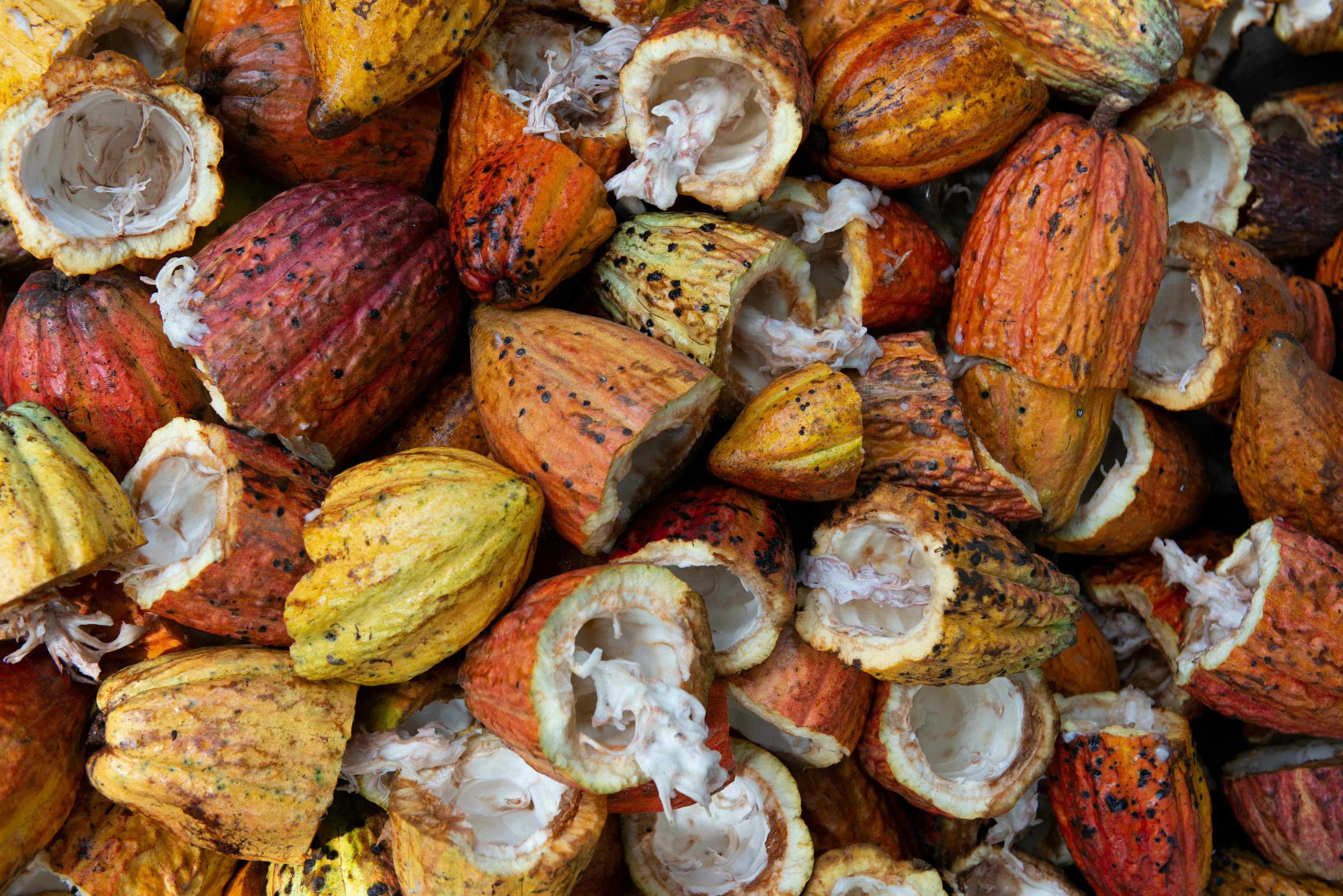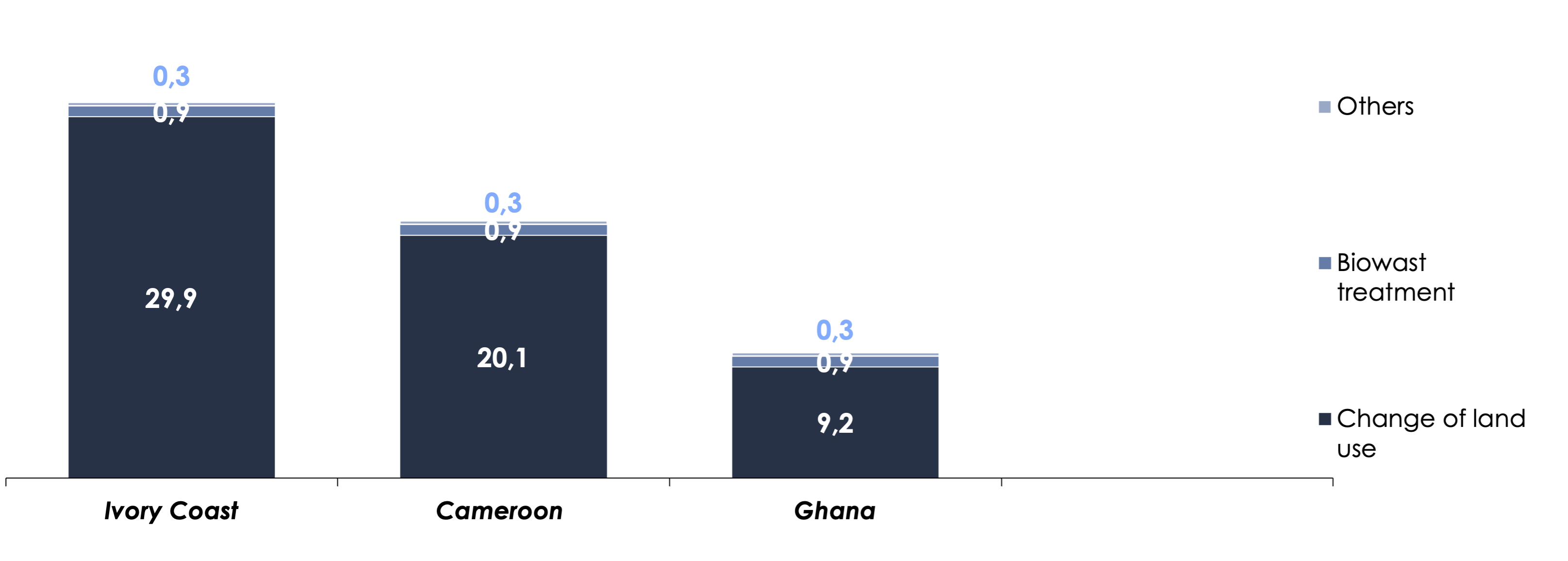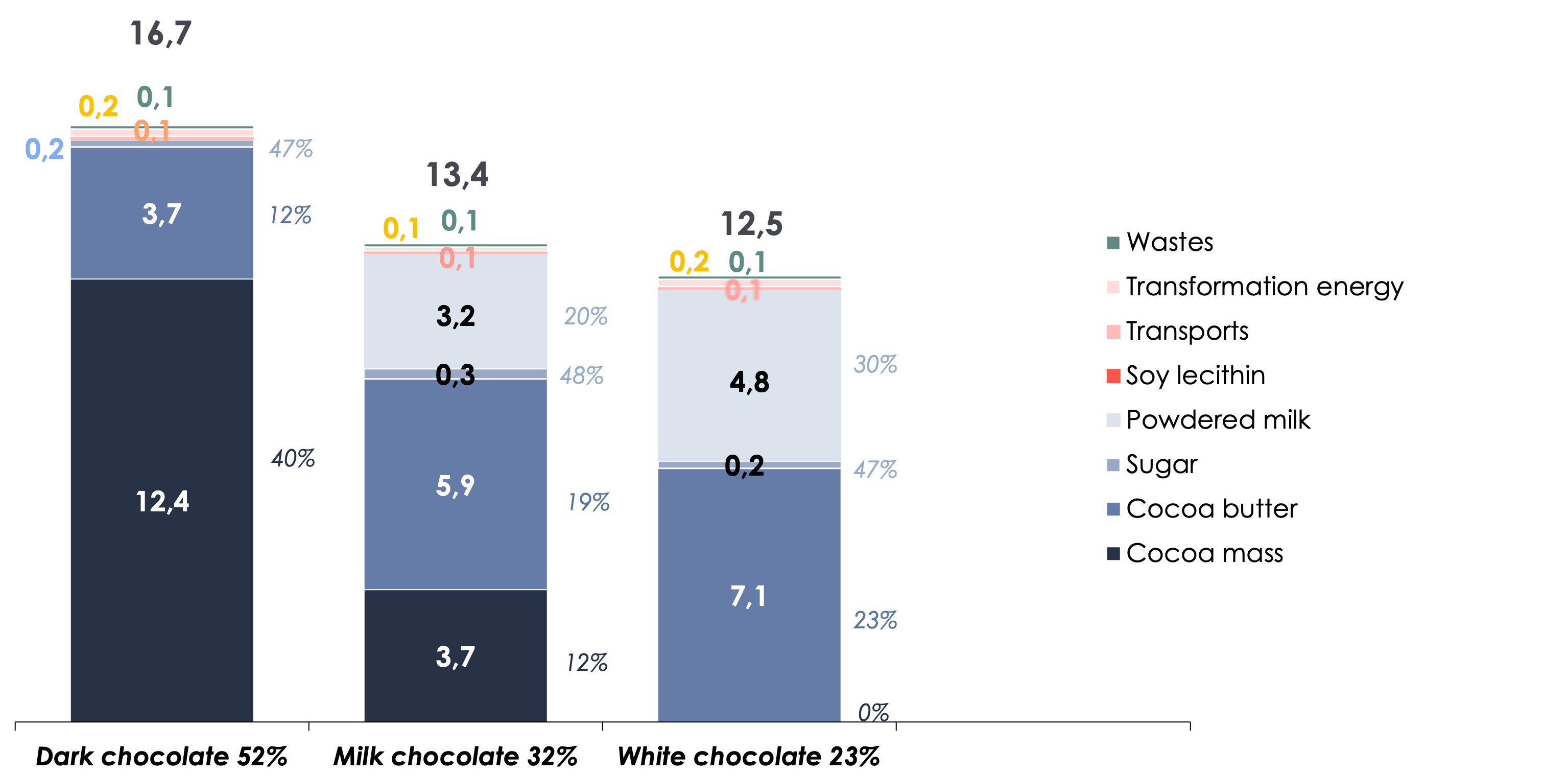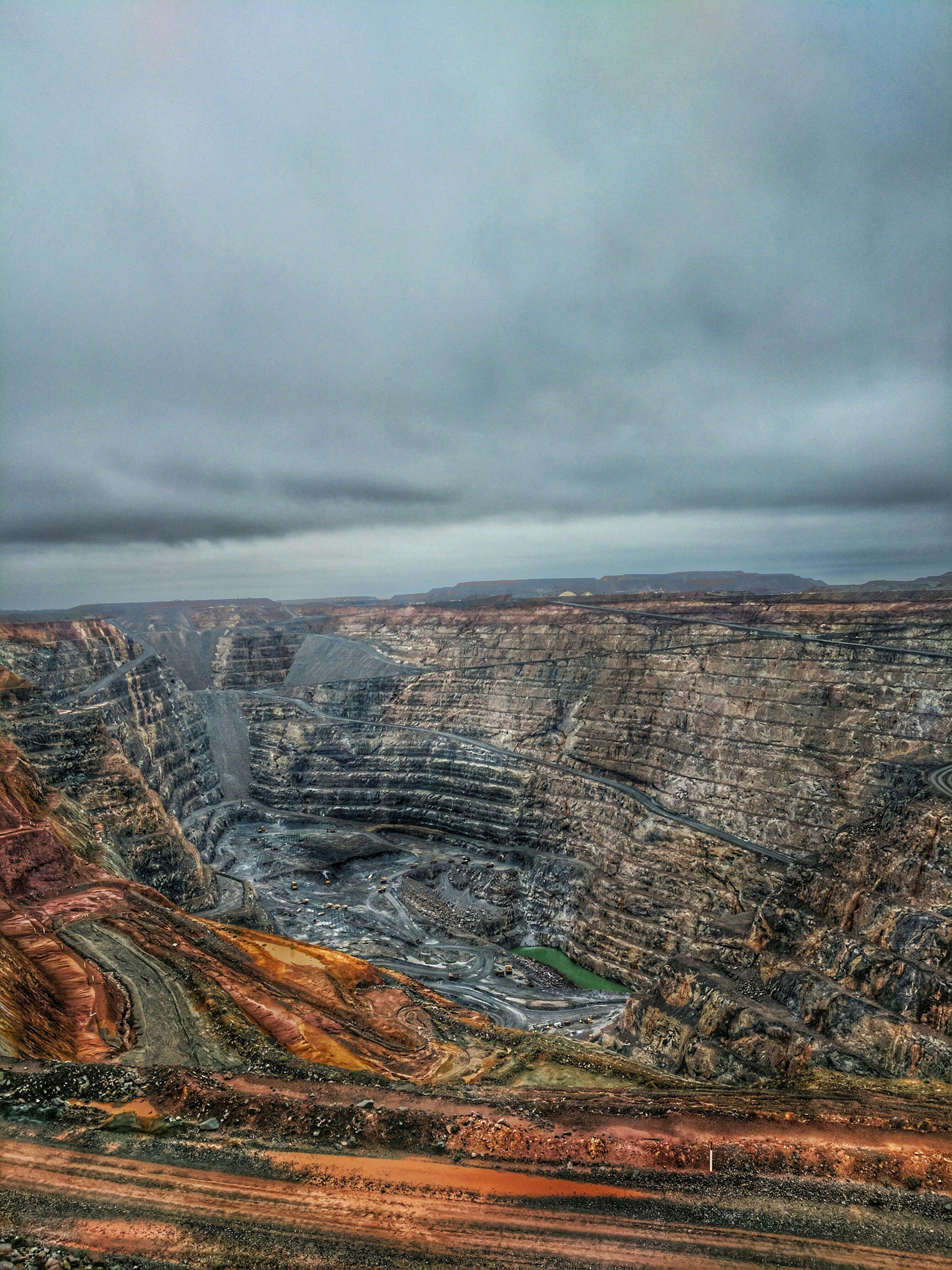Is it possible to be happily sober without chocolate?
At COP26 in Glasgow, most member countries pledged to "Conserve and accelerate the restoration of forests and other terrestrial ecosystems" [1]. However, a number of factors cast doubt on the effectiveness of this type of high-profile voluntary commitment: previous unfulfilled pledges, such as the New York Declaration on Forests[2], the absence of quantified targets by 2030, and the insincerity of some of the main signatories, such as Indonesia[3].
However, climate science is seizing on the subject in a concrete way: new reporting and carbon accounting standards[4] are emerging and give to the deforestation a central place.
On the institutional front, France has adopted a national strategy to end imported deforestation. It is being followed by Europe, which recently enacted the EUDR[5], a law designed to exclude from the European market all products derived from deforestation, i.e. the sustainable conversion of forest ecosystems to other land uses. Although our territories are little affected by the direct risk of deforestation, products imported by Northern countries are responsible for more than half of global deforestation[6]. According to WWF France[7], a dozen products are responsible for almost a quarter of the emissions generated by our agricultural system. One of these, even before palm oil, is one of the flagship products of our Western diet: cocoa.
Why does cocoa cause deforestation?
Cocoa first appeared 4,000 years ago in the northern Amazon, where it was the object of worship by the Mayas and Aztecs, who attributed medicinal virtues to it, and was even used as currency. After the Spanish conquest, it was introduced by Europeans to new territories in South America, notably Venezuela, before reaching Africa and Oceania at the beginning of the 20th century thanks to the new, stronger Trinitario and Forestaro varieties, which account for 95% of current production.
Cocoa cultivation is now concentrated in the "cocoa belt", close to the equator, in tropical areas where forests were relatively preserved because cocoa requires rich soils[8]. In addition to replacing these areas of high ecological value - notably as carbon sinks and reserves for biodiversity - cocoa plantations deplete soil and water resources when grown as single-crops.
They are also highly sensitive to climatic hazards, particularly in intensive monocultures. These have the highest yields, but eventually collapse due to disease, pests and soil degradation[9].
Despite these "agronomic" difficulties, it is above all the growing demand from Western countries and the low remuneration of producers that is driving them to release ever more land for this crop, since it is less costly[9][13], to create new areas than to restore existing ones[10].
One way of limiting this pressure is to increase the yields of part of the cocoa plantations whose cultivation is extensive and poorly optimized. According to a CIRAD study[9], there is an optimum that guarantees decent yields while enabling cocoa plantations to produce for around a hundred years, compared with 30 to 40 years for intensive monocultures, before being replaced by another crop. But even if yield gains can be expected for part of the production, these improvements will not be infinite. Current acreage will not be sufficient to meet the growing demand for cocoa. To meet it, an increase in cultivated area will be necessary.
What does this mean for chocolate's carbon footprint?
Not surprisingly, emissions from deforestation account for almost all (~95%) of the carbon footprint of cocoa production[11]. The country of production and the local situation of the forests therefore have a considerable influence on the footprint of beans of different origins (Fig.1)
These emissions from deforestation are therefore reflected in the carbon footprint of chocolate, whose carbon intensity depends first and foremost on the origin of the beans (Fig. 2). But the milk powder used in the recipe for milk or white chocolate also has a relatively high carbon intensity, ahead of the other ingredients - mainly sugar.
A chocolate's footprint will therefore depend on the origin of the cocoa and its recipe. For example, a dark chocolate with a high cocoa content from an area where deforestation is high will have most of its emissions associated with cocoa production. Conversely, for a white chocolate with low cocoa content from an area where deforestation is low, it is the milk powder, which is more emissive than non-deforesting cocoa, that accounts for most emissions. (Fig. 3)
Why has cocoa's carbon footprint recently increased?
In WFLDB3.5[12], the main source of carbon data on cocoa, greenhouse gas (GHG) emissions associated with the production of one bean have doubled between 2019 and 2022. Why this sharp increase?
The first answer is methodological: the state of knowledge about deforestation, its consequences and, above all, its measurement, continues to mature. It's not the emissions from cultivation that are increasing, but our ability to estimate them that is improving.
The second answer is physical: cocoa cultivation is having an increasingly significant direct or indirect impact, for two reasons:
- it's a product grown in areas where forest loss is accelerating;
- it is a product for which demand, and therefore the increase in cultivated areas, is rising sharply (Fig. 4), while yields have been stable since the 1990s. This accentuates the responsibility of cocoa cultivation for the pressure exerted on the land.
In Ivory Coast, the world's leading cocoa producer, which accounts for almost half of all cocoa volumes, the area planted with cocoa trees has increased 18-fold in 60 years (Fig. 4), while the forest has lost more than 80% of its original area.[13]
Conclusion
Following the adoption of the EUDR (European Union Deforestation Regulation), for each commodity (or by-product) on the list[14], companies will have to report the place and date of production of agricultural raw materials to enable them to be placed on the European market. Cocoa companies will therefore have to pay close attention to these impacts. The regulator's role will be to verify via satellite images that the product in question has not directly caused deforestation. These regulations will require considerable work on the part of the companies concerned but will help to improve traceability within agri-food chains, a crucial step in limiting the negative impacts of this sector and creating virtuous cycles.
However, deforestation will not be curbed unless restrictions are implemented worldwide. European countries will be able to switch to cocoa from lands deforested before 2021 and not covered by regulations[15]. Other consuming regions, on the other hand, will have no difficulty in sourcing cocoa from recently converted land.
Faced with these facts, is it possible to think of happy sobriety without chocolate? Its irresistible nature makes it a taboo in ecological discourse, yet the more we consume it, the greater the pressure on tropical forests.
It is therefore inevitable to reverse the trend by reducing our chocolate consumption, which reached 8.1 kg in 2019 for an average French person (compared with 6.3 in 2010)[16], mostly (~54%) in the form of spreads, confectionery, and chocolate bars[17]. Perhaps it's time to ask ourselves: do we need so much chocolate so regularly? Shouldn't we first reduce our consumption of many processed products containing chocolate, and restore cocoa's festive and exceptional character? As our grandmothers used to say: "Earth is the only planet where you can find chocolate, so let's preserve it!
Contact us
Contact us about any question you have about Carbone 4, or for a request for specific assistance.







